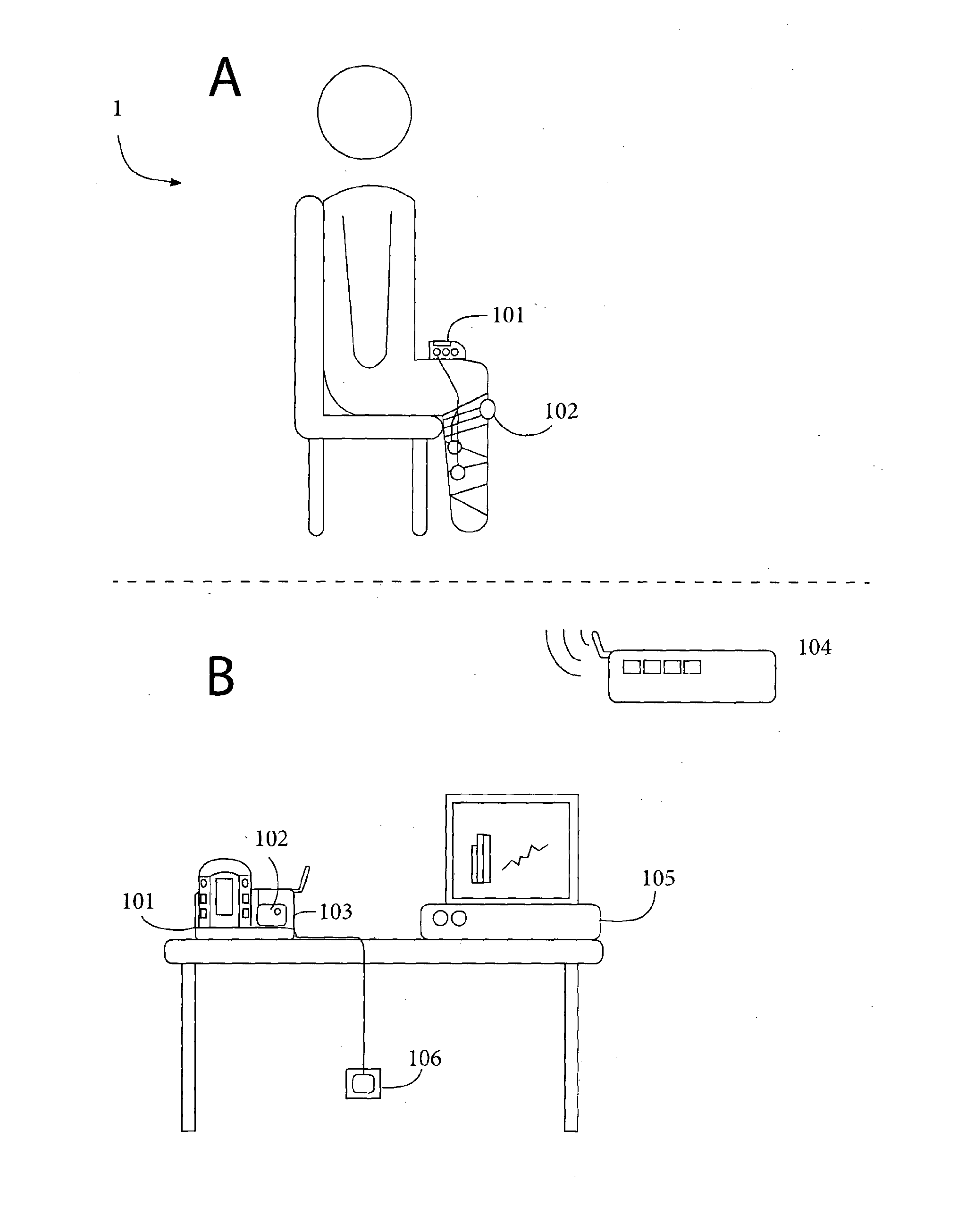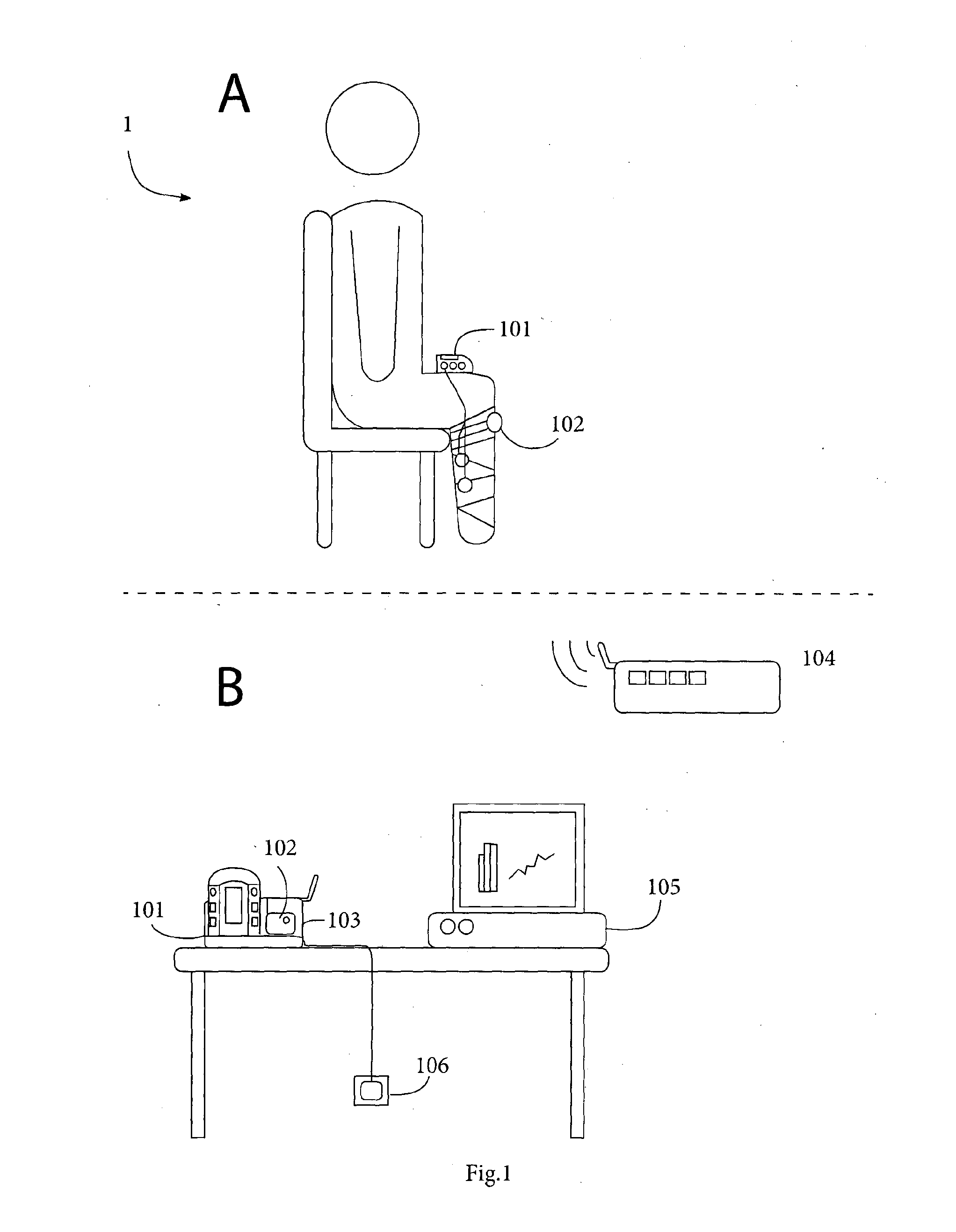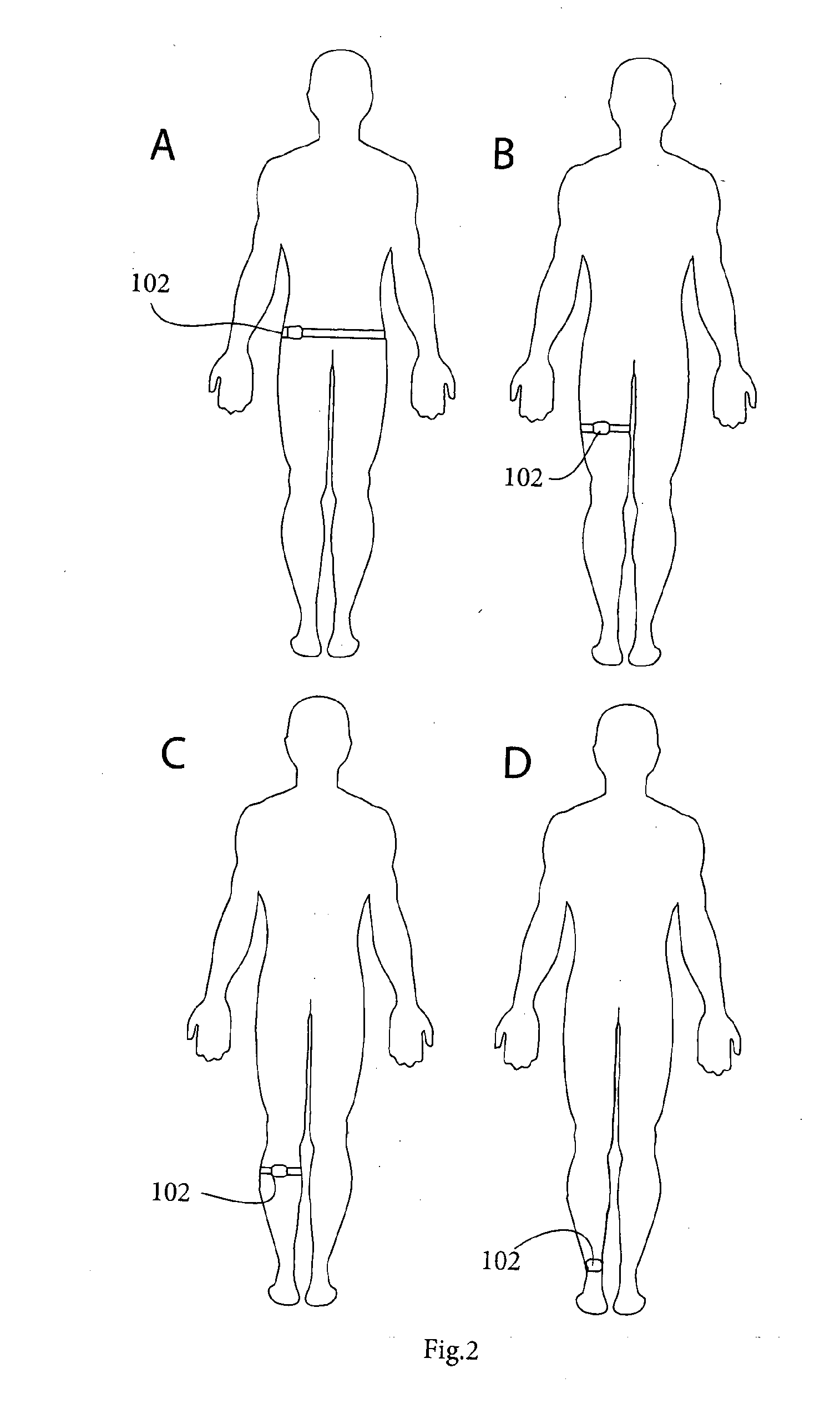System for management and prevention of venous pooling
a venous pooling and management system technology, applied in the field of artificial stimulation of flow, can solve the problems of increased venous pressure, poor calf muscle pump function, and venous valve breakdown, and achieve the effect of minimizing venous pooling
- Summary
- Abstract
- Description
- Claims
- Application Information
AI Technical Summary
Benefits of technology
Problems solved by technology
Method used
Image
Examples
Embodiment Construction
Brief Description of the Drawings
[0067]The invention will be more clearly understood from the following description of some embodiments thereof, given by way of example only with reference to the accompanying drawings in which:—
[0068]FIG. 1 is a general overview of the main components of a system of the invention in use;
[0069]FIG. 2 shows possible locations for wearing sensors on the trunk and legs;
[0070]FIG. 3 is a functional block diagram of a sensor unit of the system;
[0071]FIG. 4 shows sensors incorporated into a garment;
[0072]FIG. 5 shows one possible configuration for the enclosure of the sensor unit;
[0073]FIG. 6 is a diagram showing how static venous pressure is calculated using postural data joint angles determined from sensors;
[0074]FIG. 7 shows two postures illustrating a postural transition from sitting to standing and the corresponding venous pressure waveform;
[0075]FIG. 8 is a flow diagram for the system controller to generate an alert based on a determination of venous...
PUM
 Login to View More
Login to View More Abstract
Description
Claims
Application Information
 Login to View More
Login to View More - R&D
- Intellectual Property
- Life Sciences
- Materials
- Tech Scout
- Unparalleled Data Quality
- Higher Quality Content
- 60% Fewer Hallucinations
Browse by: Latest US Patents, China's latest patents, Technical Efficacy Thesaurus, Application Domain, Technology Topic, Popular Technical Reports.
© 2025 PatSnap. All rights reserved.Legal|Privacy policy|Modern Slavery Act Transparency Statement|Sitemap|About US| Contact US: help@patsnap.com



